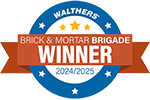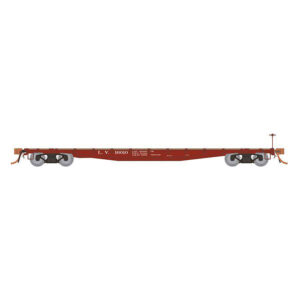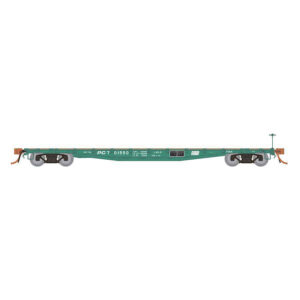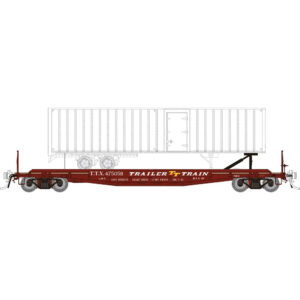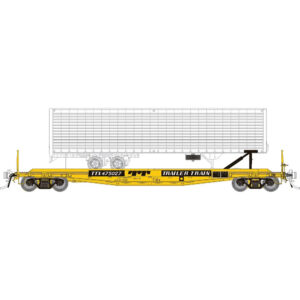50' Flat Car
Prototype Information
The Pennsylvania Railroad introduced the F30 flat car in 1929. It featured riveted steel construction and could carry 140,000 pounds. In 1942, PRR upgraded it with AB brakes and 2F-F4 trucks. This raised the capacity to 190,000 pounds and improved performance.
From 1933 to 1934, PRR’s Pitcairn Shops built 1,500 F30A cars. These used a one-piece cast steel frame from General Steel Castings. The design reduced weight and cut maintenance. The F30A became PRR’s most common flat car.
In 1951, PRR built 250 F30D cars with cast steel underframes. Starting in 1954, it converted many for piggyback service. Crews added rub rails, loading ramps, and trailer fittings. Between 1957 and 1958, 86 of these cars went to the Trailer Train Company. TTX reclassified them as F30G and kept them in service into the 1980s.
The F30 series showed how PRR adapted to new freight demands. These cars handled everything from heavy loads to early intermodal trailers. They stayed useful for decades and left a lasting mark on freight car design.
Showing all 8 results
-

Rapido HO 50′ F30a Flat Car – Undecorated
$49.90 Add to cart -

Rapido HO 50′ F30a Flat Car Conrail “Maintenance of Way, Camp Van Dining” #62954
$61.00 Add to cart -

Rapido HO 50′ F30a Flat Car Lehigh Valley
Price range: $42.00 through $49.90 Select options This product has multiple variants. The options may be chosen on the product page -

Rapido HO 50′ F30a Flat Car Penn Central
Price range: $42.00 through $49.90 Select options This product has multiple variants. The options may be chosen on the product page -

Rapido HO 50′ F30a Flat Car Pennsylvania “1960s Era”
$49.90 Select options This product has multiple variants. The options may be chosen on the product page -

Rapido HO 50′ F30d TOFC Flat Car “Late Style” – Undecorated
$49.90 Add to cart -

Rapido HO 50′ F30d TOFC Flat Car Trailer Train “Late Red” w/ Trailer
$69.70 Select options This product has multiple variants. The options may be chosen on the product page -

Rapido HO 50′ F30d TOFC Flat Car Trailer Train “Yellow” w/ Trailer
$69.70 Select options This product has multiple variants. The options may be chosen on the product page

